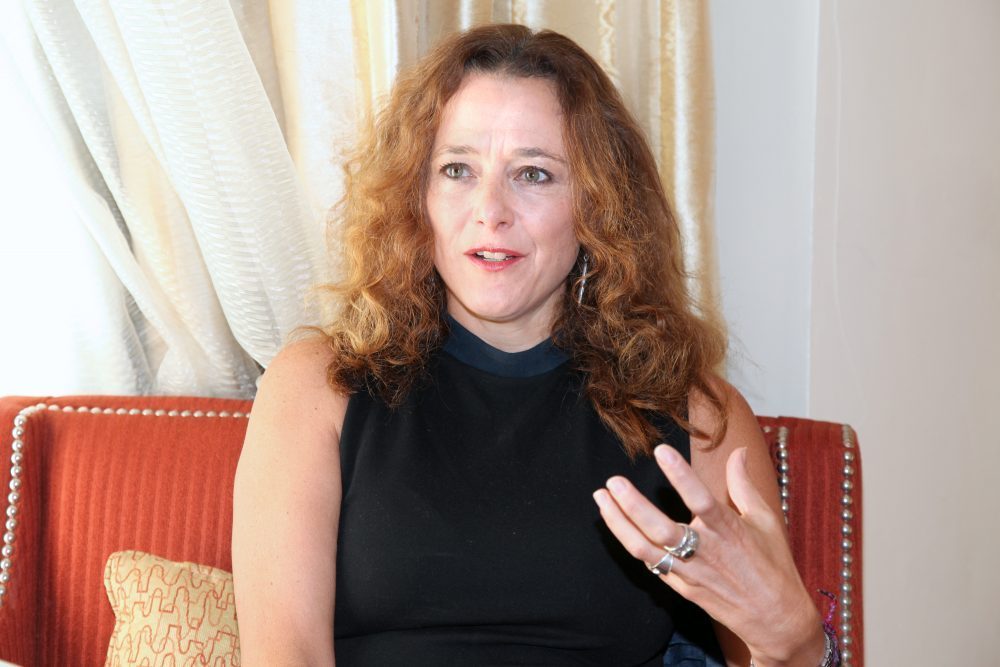
Photo by Aaron Salcido.
Cristina King Miranda is a Mexico City-based performing arts curator. Before taking part in a panel discussion entitled “What Does the Public Want from the Arts?” that was part of a Zócalo Public Square conference, “What Can the World Teach California About Arts Engagement?”, on June 25 in downtown Los Angeles, she spoke in the green room about Mexican Baroque, stories about unfamiliar places, and a childhood lesson in learning to trust.
How did you end up in Mexico City?
I moved there almost 20 years ago on what was supposed to be a Fulbright grant, and I stayed.
What do you like most about living there?
I like its indigenous quality, its color, its smells, the Baroque-ness. I feel like I, in another life, lived in the Baroque era. That would’ve been an era that I would’ve felt right at home in. And the decadence also of Mexico attracts me. The energy and the dysfunctionality of it, in a way, all that chaos. I think the creativity of Mexico is greater than in any other place right now—forget New York, forget L.A., forget the normal cultural capitals, Berlin, Paris. I think we’re the now; Latin America is the now.
What don’t you like about it?
At the same time that I say it has diversity, and that Mexico City is diverse, I can also say that I miss a part of the diversity that I grew up with, which is Caribbean, which is blackness, which is Afro American, which is blues, which is going to a dive bar and listening to some rocking rockabilly or blues. I miss that a lot. And more and more, many Mexico City neighborhoods are becoming more hipster, more gentrified, more cosmopolitan, where everything is the same, anywhere in the world. I don’t like that and I don’t like the machismo in Mexico. For women, the violence against your soul and self is endemic, and it’s pretty bad, and it’s swept under the rug.
Was there a teacher or professor who particularly influenced you or even changed your life?
My fourth grade teacher, Rita Segerman. She was the only Latina teacher in a very kind of upper-middle class public elementary school, and she taught me about inclusion. She taught me about being respectful of others, which was a big lesson for me. She also changed my view of school, and the kind of spit-and-regurgitate mentality of learning. She really made me think about concepts, at that early age.
Where and when did you learn how to swim?
Puerto Rico. My mom is Puerto Rican, so a lot of what I do in my work comes from kind of a post-colonial mentality and my upbringing with the family in Puerto Rico. So I learned to swim on a beach very near the Condado area in San Juan; my grandmother lived on the Condado. So my dad, who is an ex-military guy, said, “Well, here we go, let’s go in the water, I’m going to hold you.” He put his hand underneath me, we get in the water, he let me go. So the trust thing was a little brutal for me. So that’s how I learned to swim—to float. Because he was very much this old school idea that trust is about, “Well, you’ll fall, but pick yourself up. I’m here, but I’m not going to embrace you more than this.” The first impression was “sink or swim.”
What are you reading right now?
This book about fathers and sons by Hisham Matar. His father was a high-level person in the government of King Idris. I’m trying to read stories about worlds that I’m completely unfamiliar with. I also just read this book Kindred by Octavia Butler, about an African American woman who time travels back to the slave era. It’s intense and it’s bizarre and it’s very real and relevant today. I’m incensed by what is going on with the U.S.-Mexico binational relationship. It’s sad and it’s violent and it’s offensive. I also read the poet Javier Sicilia, who walked through his pain after his son was killed in Cuernavaca.



